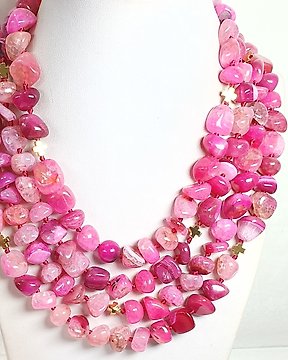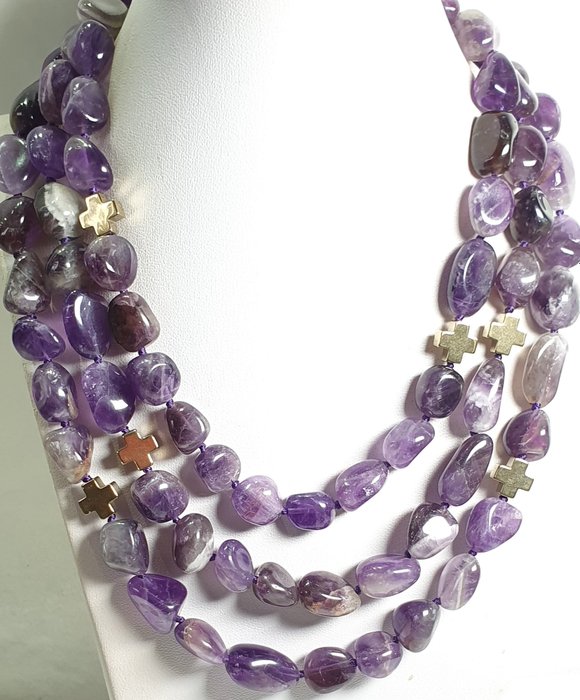
Agata Rosa - RARA - con cruces griegas (mejora relacion de pareja) - broche plata 925 chapado oro - Collar
N.º 82672145

N.º 82672145

I offer for auction a spectacular necklace of gold plated hematite Greek crosses (protection & balance) and amethyst beads of high quality. The entire necklace has been spun by hand with knots on each bead and cross. The clasp is made of gold plated 925 silver.
Hand spun necklace with knots on each amethyst gem and each cross.
This exclusive necklace, being very long, can be worn in many different ways, all very flattering depending on the occasion.
Material: NATURAL amethyst beads - top grade grade AAA
Size: 18 to 9 mm
Greek crosses made of gold plated hematite
Necklace length: 135 cm
Gold plated 925 silver clasp - marked "925"
Hand spun necklace with knots on each amethyst gem and each cross
Gift Box & protective bag
Amethyst stone is a mineral belonging to the quartz family and is characterized by its distinctive violet or purple color.
It is one of the most recognized and appreciated semi-precious stones in the world of georeiki and mineralogy. Its name comes from the Greek “amethystos”, which means “not drunk”, due to the belief that this stone had the power to protect against drunkenness.
This purple stone has been prized throughout history for its metaphysical attributes and is considered a spiritual stone. It is believed to have healing and protective properties, both physical, emotional and spiritual. In georeiki, it is used to balance the chakras, especially the third eye and the crown, promoting mental clarity, intuition and connection to spirituality.
In addition to its aesthetic beauty, wearing amethyst close to the body is considered to promote a state of calm, relieve stress and help you fall asleep.
Greek cross (crux quadrata): An old type of cross with arms of equal length.
It is the most absolute simplification of the symbol. It is the concentration in its pure state.
The meaning of the Greek Cross is that of protection and balance, due to its symmetrical shape with arms of the same size. It is also believed that the Greek cross is a representation of God and on the other hand the Latin cross that we all know is the representation of the crucifixion of Christ.
The Greek Cross despite the fact that its name indicates that it was born and used mainly in Greece, it is not. The Greek Cross makes its appearance in the East by the Christians who inhabited those territories. The cross was based on the Immisa Cross where Jesus died but with the stick shortened, giving it a symmetrical aesthetic to be able to see it in the same way from any direction.
It is believed that the use of this cross in the East was influenced by the True Cross found in Jerusalem. Helena of Constantinople, also known as Saint Helena, dedicated her life to finding the relics of the True Cross (the cross where Jesus Christ was crucified). She traveled to Jerusalem in about 326 to discover its location.
She finally said to find the place where the true cross and the tomb of Jesus was located. Then her son Constantine built a church at the request of her mother in the same place where there was already an ancient temple erected to Venus (for the Romans) or Aphrodite (for the Greeks). This church was known as the Church of the Holy Sepulchre, located in the area of the old city of Jerusalem.
After finding the cross where Jesus Christ died, Saint Helena cut off the lower part of the Cross (approximately a fifth of its height) and sent it to Rome as a relic, known as the Lignum Crucis. She then left the remaining cross in Jerusalem, which, having been sawn, was left in the shape of a Greek Cross.
Photos are part of the description
Cómo comprar en Catawiki
1. Descubre algo especial
2. Haz la puja más alta
3. Paga de manera segura